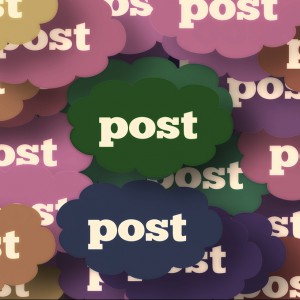 The blogging industry continues to evolve with each passing year. Among the latest trends to hit this industry involves publishing short, concise posts instead of longer ones. Up until now, the general consensus has been that longer posts are better are since they are easier for search engines to crawl, but there’s a growing trend towards the use of microblogging, which is something that we’re going to discuss in today’s post.
The blogging industry continues to evolve with each passing year. Among the latest trends to hit this industry involves publishing short, concise posts instead of longer ones. Up until now, the general consensus has been that longer posts are better are since they are easier for search engines to crawl, but there’s a growing trend towards the use of microblogging, which is something that we’re going to discuss in today’s post.
What is Microblogging?
The term “microblogging” refers to the practice of publishing small pieces of content on a blogging platform like Tumblr. The content doesn’t necessarily have to be text; it can be images, videos, PDF files, or any other type of digital content. The defining characteristic of microblogging is the length of content. Unlike traditional blogs, microblogs comprise short pieces of digital content.
Pros of Microblogging
- Researching and writing new posts takes less time. It’s not uncommon for bloggers to spend hours, sometimes even days, creating new posts. Microblogging, however, allows bloggers to produce new content on the fly, in just a fraction of this time.
- Increased social sharing. Microblog posts tend to receive more social shares than traditional blog posts. This is due to the fact that social media users prefer small, easy-to-digest pieces of content as opposed to large content.
- Fresh new content. Search engines love new content, and microblogging allows you to publish new content on a regular basis. Even if you have limited time to blog, you can still churn out some microblog posts every couple of days. This shows the search engines that your blog is active and t
Cons of Microblogging
- Increased SEO difficulty. Search engines have adjusted their algorithm dramatically over the years, but they still rely on content to determine what a particular website (or blog) is about. And because microblogs consist of small pieces of digital content, search engines may have trouble crawling them, which could hurt your efforts to achieve a top search ranking for your target keyword.
- Limited depth of content. Of course, one of the primary drawbacks of microblogging is its limited depth of content. It’s next-to-impossible to write microblog posts on certain topics and niches. If the topic requires an in-depth analysis or expert commentary, it may not be suitable for microblogging, in which case you should stick with a traditional blog format.
- Limited themes/templates and plugins. Another drawback of microblogging is the limited number of themes (or templates) as well as plugins and addons. Assuming you use a popular microblogging platform like Tumblr, you’ll be restricted to using its select themes and plugins. The good news is that you can always create a microblog using WordPress, although WordPress is most commonly associated with full-size traditional blogs.
What are your thoughts on microblogging? Love it or hate it? Let us know in the comments section below!


I like the idea of microblogging but the effect on SEO concerns me.
I think microblogging is going to be very popular in the future. We’re in a get it now society, where people want information quickly and don’t want bothered with investing much time into reading it.
I don’t really care for the idea of microblogging. I find it ironic that Twitter invented the short post and they are considering expanding it. If that’s the case, why would blogging trend in the opposite manner?